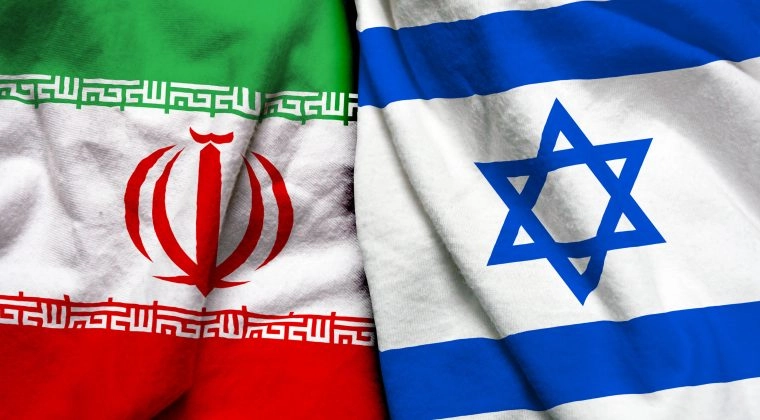-
- Trading Platforms
- PU Prime App
- MetaTrader 5
- MetaTrader 4
- PU Copy Trading
- Web Trader
- PU Social
-
- Trading Conditions
- Account Types
- Spreads, Costs & Swaps
- Deposits & Withdrawals
- Fee & Charges
- Trading Hours

The escalation of the Israel-Iran conflict since June 13, 2025, has injected heightened geopolitical risk and increased volatility into global financial markets. Israel’s surprise airstrikes on Iranian nuclear and military installations triggered swift retaliatory drone and missile attacks by Iran, raising alarms over the potential for broader regional instability. Particularly concerning is the risk to the energy-critical Strait of Hormuz, through which a substantial portion of the world’s oil and LNG shipments pass. This report details the unfolding timeline of the conflict, outlines three forward-looking scenarios, and assesses the implications for major asset classes, including oil, gold, and equities.
[June 13] Israel launched coordinated airstrikes on Iran’s Natanz nuclear facility, key missile production sites, and military command centers. The offensive resulted in the death of IRGC chief Hossein Salami and marked a major escalation in the ongoing shadow war between the two nations. Prime Minister Benjamin Netanyahu signaled that Israel would continue targeting Iran’s nuclear ambitions in a sustained campaign. The financial markets responded swiftly—Brent crude oil spiked by 10% intraday to $78.45, the Dow Jones Industrial Average dropped by 1.79% (770 points), and gold rose 1% to $3,446 per ounce. In retaliation, Iran launched over 100 drones and missiles into Israeli territory, prompting Israel to declare a state of emergency.
[June 14] A fire broke out at Iran’s South Pars gas field, resulting in a partial shutdown of operations. Oil prices remained elevated, with Brent settling up 7% at $74.23 and WTI closing at $72.98. Global equity markets extended losses, with the S&P 500 falling 1.1%, the Nasdaq shedding 1.3%, and European indices such as the DAX and CAC 40 also retreating. Former U.S. President Donald Trump publicly urged Iran to return to nuclear negotiations in an effort to avoid further escalation.
[June 15] Israel intensified its strikes by targeting Iran’s Shahran oil depot and other energy infrastructure. Iran responded with further missile barrages, some of which breached Israeli defense systems, leading to civilian casualties. The following day, June 16, saw a temporary market rebound after Iran signaled openness to resuming nuclear talks. The S&P 500 gained 1%, while oil prices eased, with WTI declining to $72. Gold also softened slightly. However, analysts warned that the markets might be underestimating the risk of disruption to the Strait of Hormuz.
[June 16] Global equity markets rebound as fears of an all-out regional war subside, with the S&P 500 rising about 1%. Oil prices cool to $72 per barrel (WTI), and gold prices decline slightly. Reports emerge that Iran is open to restarting nuclear talks, fueling risk-on sentiment. However, analysts warn that markets may be underpricing the risk of escalation, particularly if the Strait of Hormuz is disrupted.
[June 17 & 18] saw renewed volatility. Israel targeted Iran’s Bazan refinery and conducted a second strike on the South Pars gas field. Iran retaliated with additional missile launches. In a provocative move, Trump called for Iran’s “unconditional surrender,” which raised speculation about potential U.S. involvement in the conflict. Brent crude briefly touched $77, and although the Strait of Hormuz remained open, reports of communication jamming added to market jitters. Equity markets produced mixed results as investors weighed the risk of escalation against diplomatic overtures.
Looking ahead, three possible scenarios offer a framework for understanding the potential trajectory of this conflict.
The most likely scenario, with a 60% probability, assumes the conflict remains localized without disrupting shipping through the Strait of Hormuz. In this containment case, diplomatic efforts—possibly led by the U.S. and global powers—would lead to resumed nuclear talks. Oil prices would likely stabilize below $80 per barrel, and equity markets could recover within three to six weeks. Historical analogs such as the 1973 Yom Kippur War and the 2019 Gulf tanker attacks suggest markets can rebound quickly once the immediate threat recedes.
A second scenario, assigned a 30% probability, envisions broader escalation. This could involve other regional powers or a temporary blockade of the Strait of Hormuz, which handles about 20% of global oil and LNG transport. In such a case, oil prices could surge above $90 per barrel, possibly reaching $120, while inflation would rise globally and equities would sell off. Gold would likely experience sustained inflows as investors seek safe-haven assets.
The most extreme outcome, with a 10% probability, involves Israel pursuing regime change in Iran. A prolonged conflict would severely disrupt Iran’s oil exports—currently around 1.6 million barrels per day—and push oil prices above $100. U.S. equities could fall by 3–5%, and the global economy might flirt with stagflation if energy prices spike while growth slows.
Oil markets reacted sharply to the initial escalation, with Brent crude surging from $69.36 on June 12 to $78.45 on June 13, before stabilizing around $74.70. WTI peaked near $73. If the conflict remains contained, oil is likely to trade within the $70–$80 range. However, if the Strait of Hormuz is disrupted, prices could soar to between $90 and $120. According to Goldman Sachs, the loss of 1.75 million barrels per day from Iranian supply would be enough to push Brent toward $90, although the firm expects markets to normalize by 2026. Energy stocks and ETFs such as ExxonMobil, Shell, and XLE may benefit in the near term, though investors should brace for volatility.
Gold has also responded to the geopolitical uncertainty, rising 1% to $3,426 per ounce, not far from the April all-time high of $3,500. If the conflict escalates further or draws in the U.S., gold could surpass this level as investors hedge against risk. In a containment scenario, however, gold may retrace slightly as sentiment improves. Investors may consider holding gold ETFs, physical bullion, or shares in gold miners like Newmont and Barrick Gold to hedge against volatility.
Equities have come under pressure, particularly on June 13 and 14, with the Dow Jones down 1.79%, the S&P 500 losing 1.13%, and the Nasdaq falling 1.3%. European indices such as the DAX and CAC 40 also dropped by more than 1%. Defensive sectors like energy and defense outperformed, while airlines, travel-related stocks, and consumer cyclicals lagged. If the conflict is contained, the S&P 500 could recover by the third quarter. However, an escalation could derail global growth expectations and delay Federal Reserve rate cuts. RBC Capital Markets has warned of up to 20% downside in equities should the conflict drag on and restrict global trade.
The Israel-Iran conflict has become one of the most significant geopolitical developments influencing financial markets in 2025. While the most probable outcome points toward containment with limited impact on energy flows, the potential for escalation—particularly near the Strait of Hormuz—remains a key risk that could drive oil prices higher, stoke inflation, and undermine investor sentiment. In this context, investors are advised to adopt a diversified and defensive positioning, increasing exposure to energy, defense, and gold assets, while closely monitoring geopolitical signals and potential shifts in monetary policy that may shape the market response in the weeks ahead.

Trade forex, indices, metal, and more at industry-low spreads and lightning-fast execution.
Sign up for a PU Prime Live Account with our hassle-free process.
Effortlessly fund your account with a wide range of channels and accepted currencies.
Access hundreds of instruments under market-leading trading conditions.

Please note the Website is intended for individuals residing in jurisdictions where accessing the Website is permitted by law.
Please note that PU Prime and its affiliated entities are neither established nor operating in your home jurisdiction.
By clicking the "Acknowledge" button, you confirm that you are entering this website solely based on your initiative and not as a result of any specific marketing outreach. You wish to obtain information from this website which is provided on reverse solicitation in accordance with the laws of your home jurisdiction.
Thank You for Your Acknowledgement!
Ten en cuenta que el sitio web está destinado a personas que residen en jurisdicciones donde el acceso al sitio web está permitido por la ley.
Ten en cuenta que PU Prime y sus entidades afiliadas no están establecidas ni operan en tu jurisdicción de origen.
Al hacer clic en el botón "Aceptar", confirmas que estás ingresando a este sitio web por tu propia iniciativa y no como resultado de ningún esfuerzo de marketing específico. Deseas obtener información de este sitio web que se proporciona mediante solicitud inversa de acuerdo con las leyes de tu jurisdicción de origen.
Thank You for Your Acknowledgement!